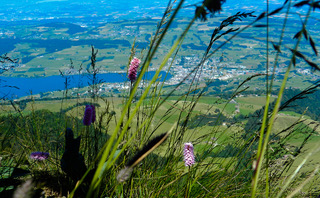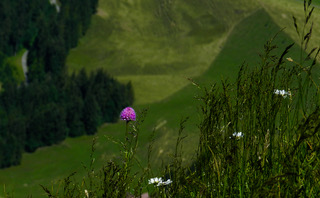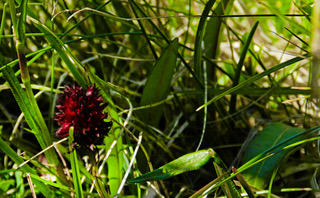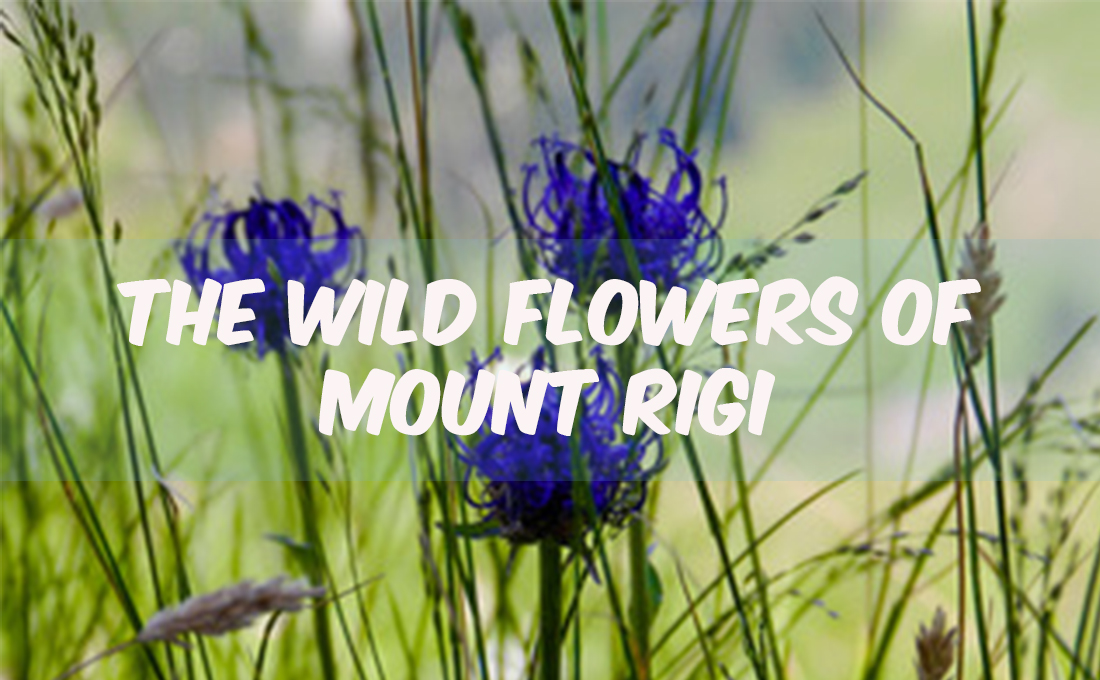By Sally Paterson
Switzerland is well known for it’s mountain flora and if you want to experience the real thing you can go up to the top of the Rigi and join one of the weekly botanical tours.
Leading the tours are the team of botanists from the Pro Rigi association, set up in 1967 to protect the wild flowers of the Rigi. The President of Pro Rigi , Urs Galliker, informs us that since the introduction of strict guidelines preventing the picking of flowers and plants 50 years ago the last 10 years have seen more than 20 species return.
Urs’ knowledge extends far beyond the identifying of the myriad of wild flowers on the hill. He tells the story of how the Rigi was formed with sweeping glaciers and riverbeds pushed up by the shifting African continent. This explains the limestone and granite conglomerate that is characteristic of the Rigi with its suspension of smooth rounded stones in a fine sediment – looking almost man made.

The day I joined a tour was a special day due to the recent discovery of a plant that has not flowered on the Rigi for over 10 years. But, before we headed up to Rigi kulm to find this little gem, Urs took us to visit the carefully hidden St. Michael’s Chapel in the Rocks. Built in 1784 on the site of the original 1585 chapel, folklore has it that three sisters fleeing from violent overlords used this hidden place as a refuge. They lived here for the remainder of their lives and when the last sister died, a healing spring sprang out from the rocks beside the chapel. Inside, a charming collection of paintings depicts the healing moments of pilgrims who have travelled to the Schwesternborn – Sisters’ spring. With an entrance hidden between two large rocks it is easy to imagine this as a secret, healing, hiding place.
Hopping on the train at Rigi Kaltbad we headed up to the highest point of the Rigi – Rigi Kulm at 1798 m. In reality we could have easily walked – the accessibility of the summit of Rigi is one of the factors that made it so popular with the early Victorian tourists. And whilst it is not particularly high as Swiss mountains go it has a breath taking 360deg view across from the impressive snowy peaks of the Bernese Oberland and Saint- Gotthard Massif, to the limestone hills of the Jura.
The excitement of the day was the opportunity to see the rare Black vanilla orchid (Nigritella nigra). Growing inconspicuously on the edge of the cliff it has an aura of specialness – a tightly packed head of dark purple flowers on a slender stem. The reason for the scarceness of this small orchid is revealed in its local name – Männertreu. A potion made from the dried, ground up roots was believed to ‘Keep your man loyal’. The protection of all plants on the Rigi now means other ways have to be found!

The orchids are much less blowsy than some of their flamboyant neighbours: the pale lilac Dianthus superbus with it’s shaggy petals, the statuesque Martagon lily with deep purple curled back petals, the pale pink poker flowers of the Bistort.

There are a massive 8-900 different species on the Rigi, including more than half of all the orchids in Switzerland. Nature has created a tapestry of colour, ever changing with the seasons, on the top of this iconic mountain.
Information on Botanical tours of Rigi:
Tours depart from Rigi Kaltbad (outside the Dorfladen) at 10.00 on Wednesdays from May through to August 2 and on the first Saturday of the month (August 5) from Rigi Staffel.
For full details go to www.rigi.ch/wandern
Transport to Rigi Kaltbad is either via the cable car from Weggis or the train from Vitznau.
Tours are in German but you can request an English speaker.
For more information on protecting plants on the Rigi go to www.prorig.ch



